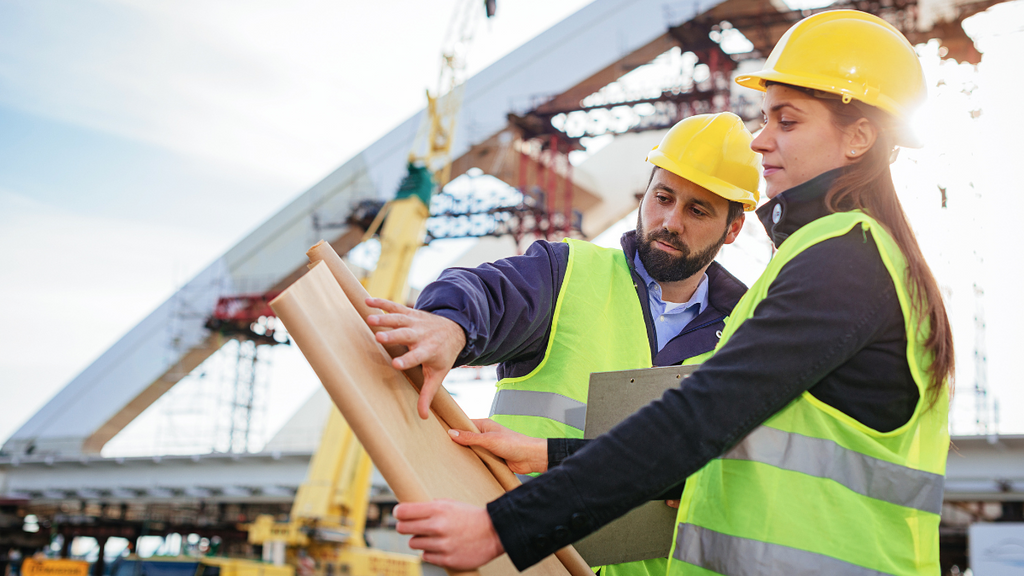The Best Strategy To Use For Geotheta
The Best Strategy To Use For Geotheta
Blog Article
Geotheta Fundamentals Explained
Table of ContentsLittle Known Facts About Geotheta.Top Guidelines Of GeothetaThe Buzz on GeothetaThe Facts About Geotheta RevealedThe Best Guide To Geotheta

They conduct site examinations, accumulate samples, carry out laboratory tests, and assess information to review the suitability of the ground for construction projects - Consulting Engineers. Based on their findings, geotechnical engineers give referrals for structure style, incline security, retaining structures, and reduction of geotechnical threats. They collaborate with other professionals, such as architects, structural engineers, and building teams, to make certain that geotechnical considerations are incorporated into the total task style and implementation
By assessing the habits and homes of soil and rock, they can determine possible geotechnical risks such as landslides, soil settlement, or incline instability. Their know-how aids avoid failings or mishaps that could threaten lives and residential property. Right here are some thorough obligations and obligations of a geotechnical designer: Website Investigation: Geotechnical designers conduct website examinations to collect information on subsurface conditions.
They translate the information to recognize the properties and habits of the dirt and rock, including their strength, permeability, compaction attributes, and groundwater problems. Geotechnical Evaluation and Design: Geotechnical engineers examine the data accumulated during website examinations to analyze the security and suitability of the site for building and construction tasks. They carry out geotechnical estimations and modeling to examine variables such as birthing ability, negotiation, slope security, side earth stress, and groundwater circulation.
Little Known Facts About Geotheta.
Foundation Design: Geotechnical engineers play an important role in developing structures that can securely support the designated structure. They examine the dirt problems and tons demands to figure out the suitable foundation kind, such as superficial foundations (e.g., footings), deep foundations (e.g (https://www.behance.net/ianhammond2)., heaps), or specialized strategies like soil renovation. They think about elements such as settlement limitations, birthing capability, and soil-structure communication to establish ideal foundation styles
They evaluate building and construction plans, display site tasks, and carry out area evaluations to validate that the design suggestions are followed. If unforeseen geotechnical problems occur, they examine the scenario and offer referrals for removal or adjustments to the style. Danger Evaluation and Mitigation: Geotechnical designers assess geotechnical dangers and risks linked with the job site, such as landslides, liquefaction, or dirt erosion.

Cooperation and Communication: Geotechnical engineers work carefully with various other specialists included in a job, such as engineers, architectural designers, and building groups. Efficient interaction and cooperation are vital to incorporate geotechnical factors to consider right into the general job style and building procedure. Geotechnical designers supply technical competence, answer questions, and make sure that geotechnical requirements are fulfilled.
Not known Incorrect Statements About Geotheta
Here are some kinds of geotechnical engineers: Foundation Engineer: Structure designers focus on making and analyzing foundations for structures. They analyze the soil conditions, load demands, and website qualities to identify the most ideal foundation kind and design, such as shallow foundations, deep foundations, or specialized strategies like stack foundations.
They examine the factors affecting incline security, such as soil buildings, groundwater problems, and incline geometry, and develop techniques to avoid slope failings and alleviate dangers. Earthquake Engineer: Earthquake designers concentrate on analyzing and designing structures to stand up to seismic forces. They evaluate the seismic threat of a site, evaluate soil liquefaction capacity, and establish seismic design criteria to ensure the safety and security and durability of structures throughout earthquakes.
They carry out area testing, collect examples, and examine the accumulated data to identify the dirt residential properties, geologic formations, and groundwater conditions at a website. Geotechnical Instrumentation Engineer: Geotechnical instrumentation engineers concentrate on surveillance and measuring the actions of dirt, rock, and frameworks. They install and keep instrumentation systems that keep an eye on aspects such as soil negotiation, groundwater degrees, incline movements, and architectural displacements to assess efficiency and provide early cautions of prospective problems.
The 25-Second Trick For Geotheta
They conduct examinations such as triaxial tests, debt consolidation tests, direct shear examinations, and permeability examinations to collect data for geotechnical try this web-site analysis and layout. Geosynthetics Engineer: Geosynthetics engineers specialize in the style and application of geosynthetic materials, such as geotextiles, geogrids, and geomembranes. They use these products to boost dirt security, enhance inclines, give drainage services, and control erosion.
They often tend to be investigative people, which means they're intellectual, reflective, and curious. They are interested, systematic, logical, logical, and rational. A few of them are additionally social, meaning they're kind, charitable, participating, client, caring, helpful, compassionate, tactful, and pleasant. Does this noise like you? Take our totally free career examination to learn if geotechnical designer is among your leading profession matches.
In the workplace atmosphere, geotechnical designers make use of specialized software program devices to execute computations, develop layouts, and assess information. They prepare reports, testimonial project specifications, connect with clients and employee, and coordinate task tasks. The office setting offers a helpful setting for research study, evaluation, and collaboration with various other professionals associated with the job.
Geotheta Things To Know Before You Get This
They frequently go to project sites to perform site examinations, analyze geotechnical problems, and collect information for analysis. These check outs include taking a trip to various places, occasionally in remote or difficult terrains. Geotechnical designers may carry out soil tasting, conduct tests, and monitor building and construction tasks to make sure that the geotechnical aspects of the task are being executed correctly.
Geotechnical designers also function in specialized geotechnical research laboratories. Geotechnical laboratory engineers function thoroughly in these settings, handling screening tools, running tools, and recording data.
Report this page